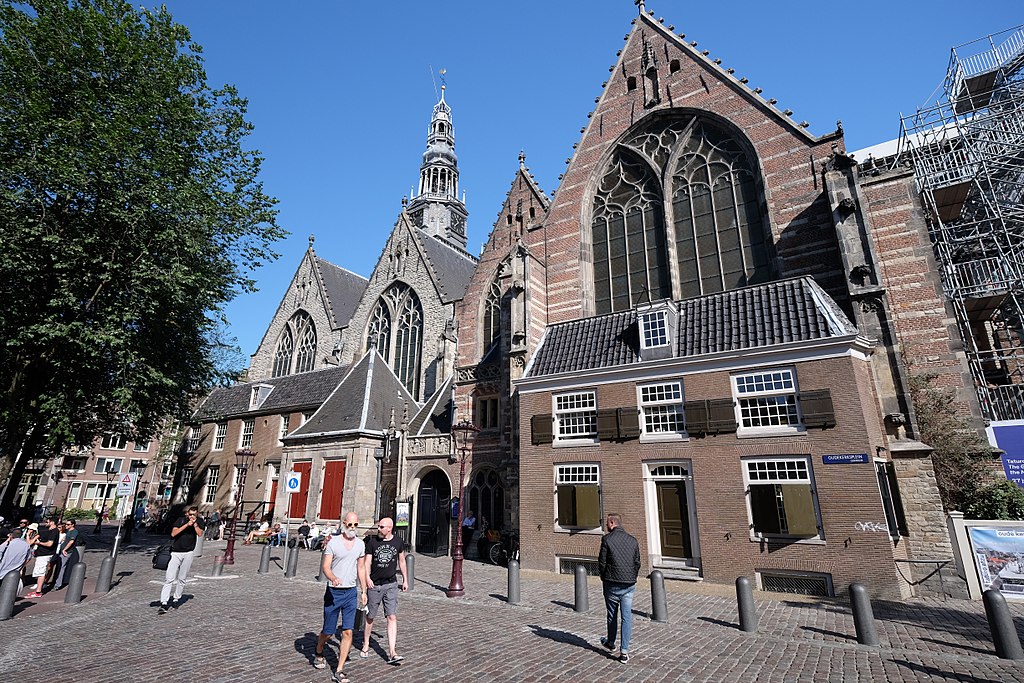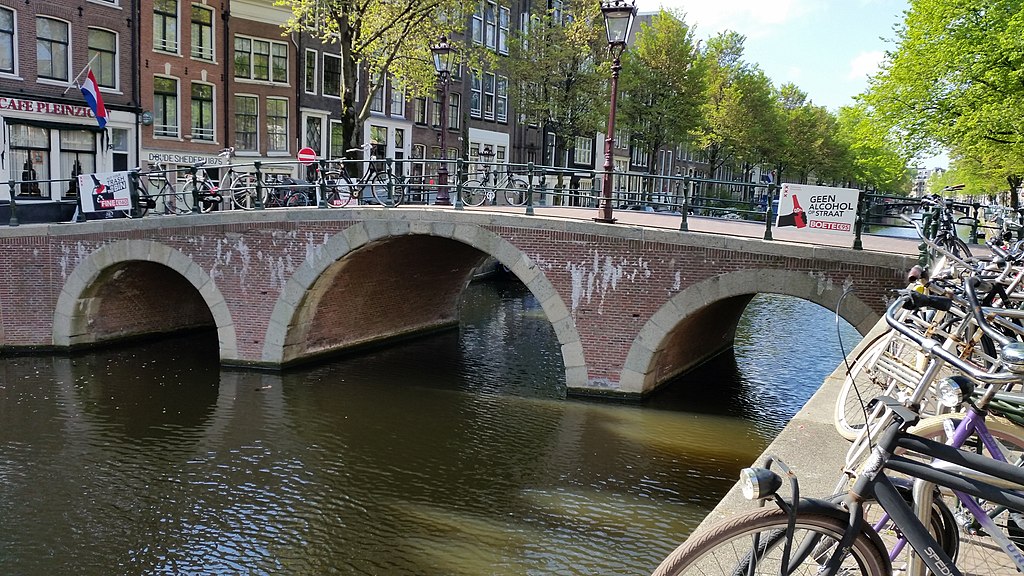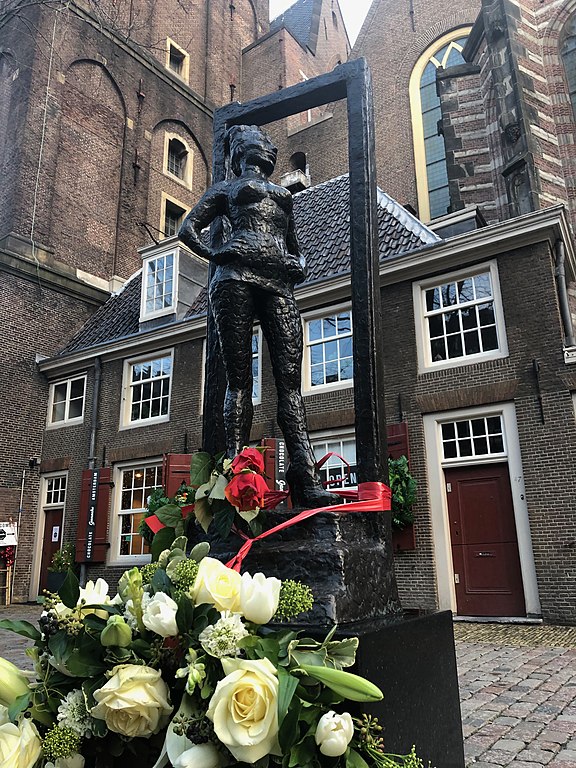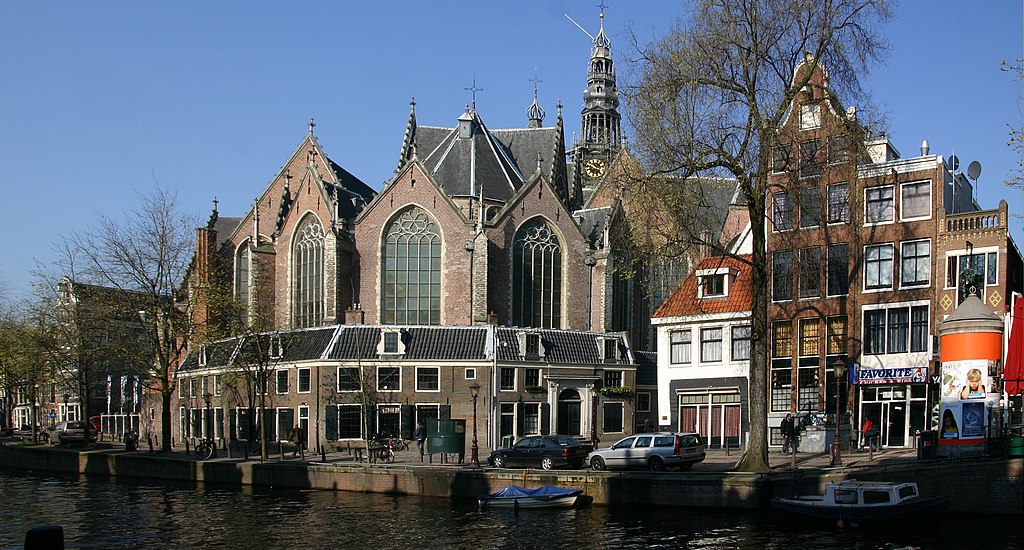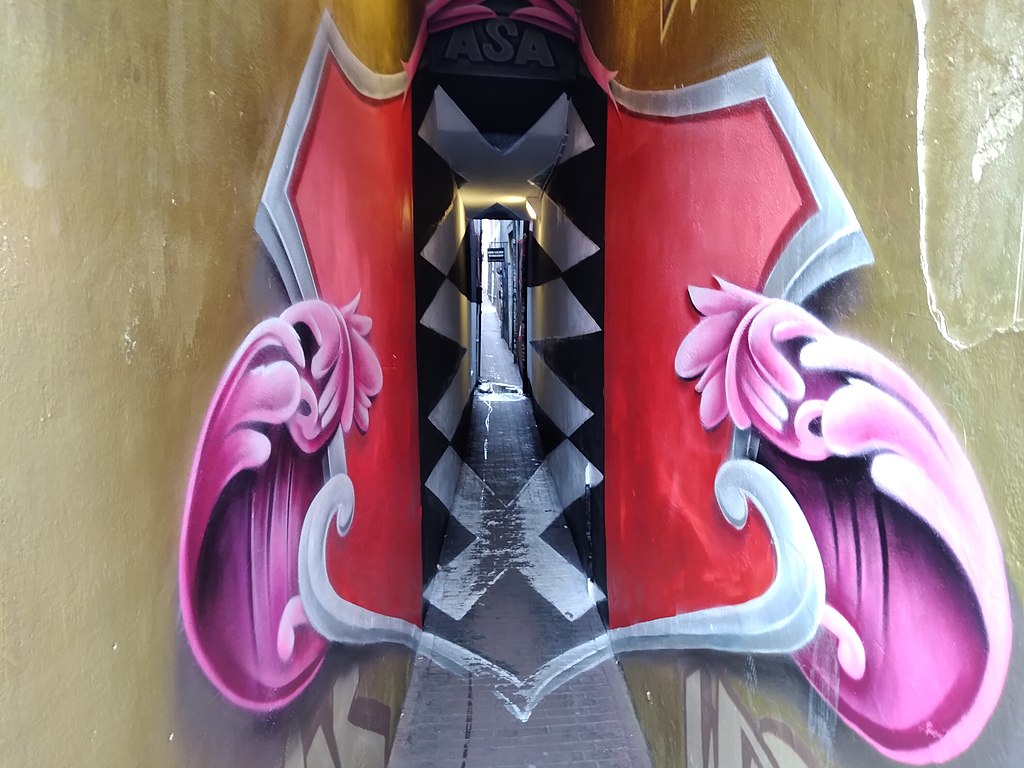Located in the very heart of Amsterdam, the Ouderkerksplein is a location everyone in the city is bound to visit at some point. Yet beyond the picturesque surface, lies a tapestry of stories and curiosities not apparent to the naked eye.
The Kuriocity guides in the area help unveil these hidden narratives and appreciate the historical significance of the square. Join us, as we explore some of the points of interest in the area, which you can also learn about with Kuriocity.*
About Oudekerksplein
First, let’s check out the general information about the square.
Audioguide transcript:
The Oudekerksplein is a historic square located in the heart of Amsterdam’s Red Light District. It is home to the oldest surviving building in the city, the Oude Kerk, which dates back to the 14th century.
Originally, the square was the churchyard surrounding the Oude Kerk, serving as a burial ground. However, in 1655, the cemetery was relocated outside the city limits, creating the square we see today.
Today, the Oudekerksplein is known for being a part of Amsterdam’s famous Red Light District. You will find a number of “windows” or peep shows where prostitutes work. In fact, there are 35 windows in total on this square.
There are two prominent art pieces worth your attention. As you walk, you’ll notice a bronze relief sculpture on the pavement called “Borstplaat,” which depicts two breasts and a hand holding one of them. The artist behind this piece is unknown.
Another prominent artwork on the square is “Belle,” a bronze statue dedicated to sex workers worldwide. It was unveiled in 2007.
The Oudekerksplein has also been an inspiration for various media throughout history. The Dutch documentary film “Rondom het Oudekerksplein” (1968) provides a glimpse into the Red Light District in the 1960s. The area also appears in the Call of Duty: Modern Warfare Two video game.
Oudekerksbrug
To enter the square, you might have to cross a historic bridge.
Audioguide transcript:
The Oudekerksbrug is a fixed bridge located in Amsterdam-Centrum. It is officially named after the nearby Oude Kerk, or Old Church, but has had previous names such as Minnebroersbrug and Molsteenbrug. Surrounding the bridge are several national monuments, although the bridge itself is not considered one.
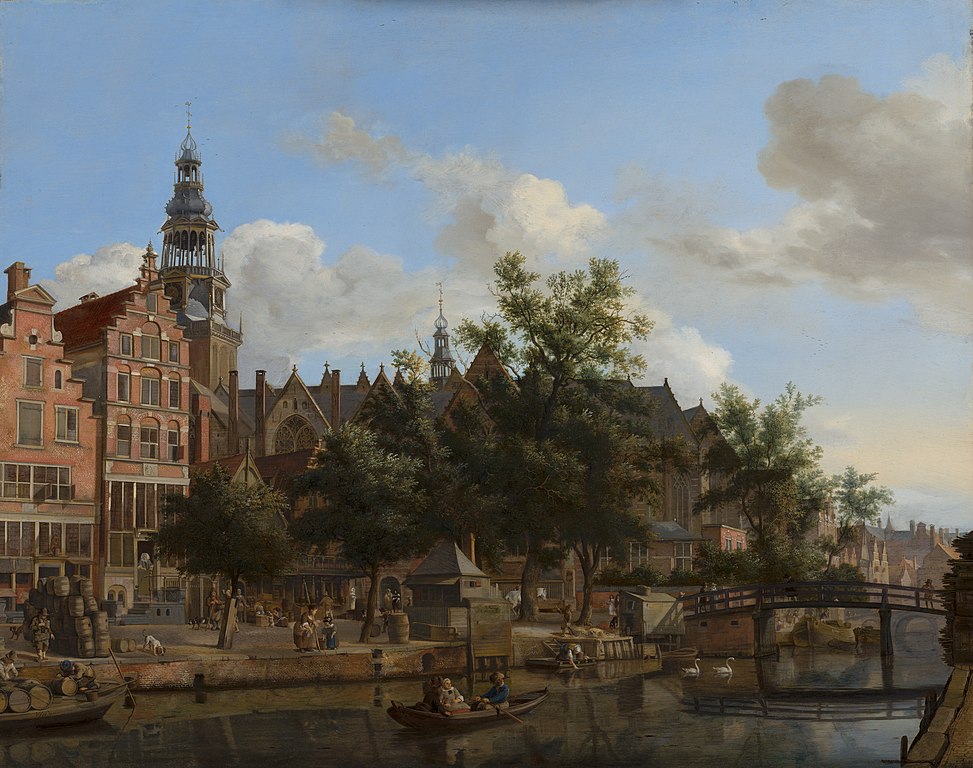
View of Oudezijds Voorburgwal with the Oude Kerk in Amsterdam, Jan van der Heyden, ~1670
The history of the bridge dates back centuries. Paintings and photographs of the Oude Kerk and its surroundings provide glimpses of the bridge’s evolution. In 1538, a painting by Cornelis Anthonisz shows a bridge, though not in the same location and slightly askew. However, a map from 1544 by the same artist depicts a bridge in the current location. The bridge can be also seen in a drawing by Balthasar Florisz van Berckenrode from 1625. Paintings by Abraham Beerstraaten and Jan van der Heyden from around 1670 show the wooden bridge on two supports. In 1861, the bridge was replaced with an iron and steel structure, which lasted over a century.
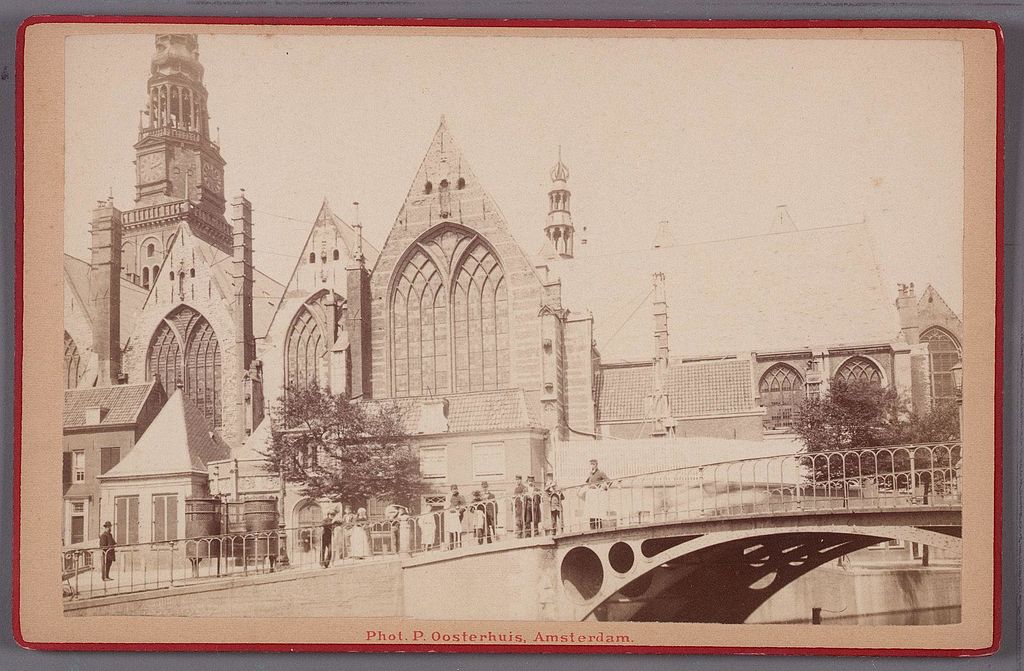
View on the Oudekerksbrug, Pieter Oosterhuis, ~1880
By the 1970s, the bridge was in need of replacement. The city initially considered a modern design, but eventually opted for a vault bridge, with three arches to better fit the historic surroundings. Constructed of concrete, brick, and natural stone, the bridge was designed to resemble the original, despite its younger age. However, due to a lack of stonemasons and the depletion of stone quarries, it was challenging to find suitable materials. The bridge was completed in 1977.
Today, the bridge is a popular spot for both locals and tourists, offering a picturesque view of the Oude Kerk and its surroundings. So take a moment to cross and immerse yourself in the charm of Amsterdam’s past.
Borstplaat (Breast plate)
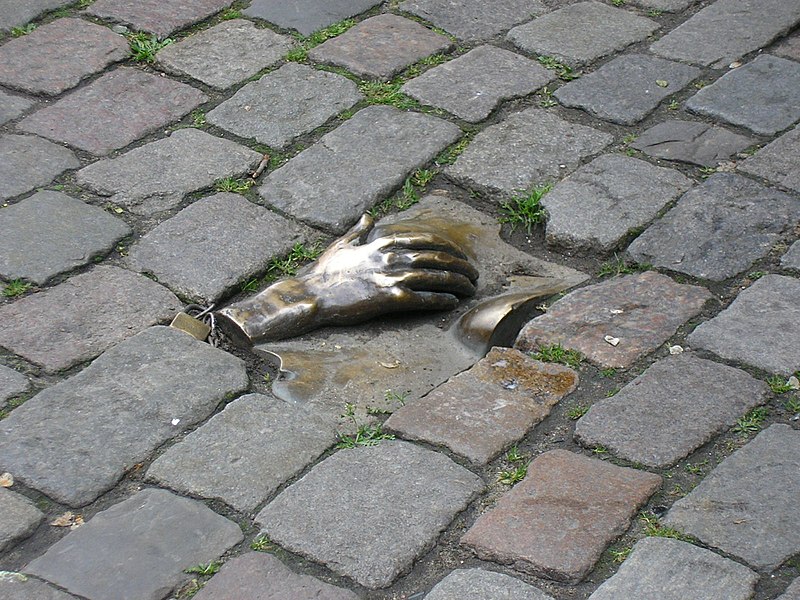
The Borstplaat
Audioguide transcript:
Welcome to the Oudekerksplein in Amsterdam-Centrum. As you look down, you will find a unique bronze relief called “Borstplaat”. This mysterious artwork was created by an unknown sculptor in 1993 and is located on the pavement of the Oudekerksplein, next to the Oude Kerk.
It features two breasts and a hand gently holding one of them. This relief, along with several other sculptures, was anonymously placed here in the middle of the night. It is attributed to the enigmatic Unknown Sculptor. Interestingly, it is not known if this is the work of a single individual or a collective.
Shortly after its installation, the artwork faced controversy and calls for its removal. Some argued that it was inappropriate for this serene location, despite the square being situated in Amsterdam’s red-light district, known as De Wallen. Others complained about the sound generated when people struck the bronze relief, causing an echo in the water basin beneath it. Additionally, the city authorities were tired of the anonymous placement of these sculptures.
The disagreement over the fate of the artwork reached a curious climax. The Secretary of Art Affairs, Ernst Bakker, who was in favor of enriching the city with these sculptures, found himself at odds with Rick ten Have, the official responsible for removing them. Interestingly, one of the complainants was Bakker’s own secretary, who was bothered by the echoing sound. Eventually, despite Bakker’s efforts to preserve the artwork, it was decided to remove it.
During the removal process, it was discovered that the sculpture was securely attached to a large chunk of concrete, indicating that its installation had been a significant undertaking. The city of Amsterdam, represented by Ernst Bakker, made a public appeal to the creator to come forward. If no one claimed authorship, the artwork would become the property of the city, which would then decide on its placement.
Fortunately, the creator did step forward, but on the condition of remaining anonymous. The city engaged in discussions with the artist, and they reached an agreement to add a sound-dampening layer to the artwork. On July 1, 1993, the sculpture was reinstalled on the Oudekerksplein, with Ernst Bakker himself unveiling it by simply removing some sand. Interestingly, during the unveiling, Rick ten Have humorously speculated that Queen Beatrix of the Netherlands might be the artist, combining artistic talent, sufficient funds, and the desired anonymity.
And so, the Breast plate stands here today, an intriguing and enigmatic artwork that adds a touch of mystery to the Oudekerksplein. Enjoy your time exploring this unique piece.
Belle sculpture
Audioguide transcript:
On the Oudekerksplein in Amsterdam stands a bronze sculpture called “Belle.” Created in 2007 by Dutch sculptor Els Rijerse, this artwork was commissioned by the Prostitution Information Center as a tribute to sex workers worldwide. The initiative for the sculpture came from former sex worker Mariska Majoor. “Belle” is a French word meaning “beautiful.”
The sculpture depicts a woman standing in a doorway at the top of a small staircase. With her hair up and wearing high heels, she exudes confidence and defiance as she looks up. The plaque on the sculpture reads, “Respect sex workers all over the world.”
Every year on December 17, which is the International Day to End Violence Against Sex Workers, flowers are laid at the sculpture. It has become a symbol of remembrance and solidarity. In fact, after the murder of a Hungarian sex worker in Amsterdam in February 2009, a memorial was held at the sculpture. It is believed to be the world’s first official statue dedicated to a sex worker.
However, the sculpture has also faced criticism. In 2019, British artist and activist Jimini Hignett sparked controversy when she proposed adding a wooden version of the sculpture to an exhibition at the Amsterdam Museum. Hignett felt that “Belle” romanticized sex workers as happy and independent, while they actually face a lot of violence. The PIC, on the other hand, believed that the use of the wooden sculpture and the invitation for people to carve their names into it could potentially incite more violence against sex workers. As a result of the criticism, Hignett withdrew her wooden sculpture and video installation from the exhibition.
So, if you visit the Oudekerksplein, take a moment to admire “Belle,” the sculpture honouring sex workers worldwide.
Oude Kerk
Audioguide transcript:
Welcome to the Oude Kerk, the oldest building in Amsterdam. This historic church, located in the Amsterdam-Centrum district, was originally dedicated to Saint Nicholas in the 13th century, the patreon saint of sailors. It served as the main Catholic church in the city until the Alteration in 1578 when it became Protestant. To celebrate its 700-year history in 2006, a replica of the angelus bell was installed, which had been lost during the Iconoclastic Fury in 1566.
Today, the Oude Kerk serves as a museum for contemporary art, showcasing site-specific installations. Since 2018, the historic style rooms and the church’s heritage collection are also open to the public. The church is a notable example of Dutch Gothic architecture, with its wooden vaults and high pointed windows.
The Oude Kerk has witnessed many important events throughout history. In the 13th century, it replaced a small wooden chapel and became the main church of Amsterdam. Over the centuries, the church underwent various expansions, including the addition of side aisles and chapels. In the 16th century, the church was raised and the tower was renovated, giving it the appearance it has today.
During the Reformation, the Oude Kerk was heavily damaged, and many altars, paintings, and statues were destroyed. From 1584 to 1611 it also served as a location for merchant fairs. It lost its status as the main church of Amsterdam when the Nieuwe Kerk was built. However, it remained an important place of worship.
The Oude Kerk is also known for being the final resting place of many prominent figures. Notable burials include the wife of Rembrandt: Saskia van Uylenburgh.
Trompetterssteeg (the narrowest street in Amsterdam)
A few steps away from the square, you can also find this very narrow passage.
Audioguide transcript:
The Trompetterssteeg is considered the narrowest street in Amsterdam with an official name.
The exact origin of its name is uncertain, but there are two possible explanations. One theory suggests that a trumpeter once lived here and would sound his trumpet from a tower as a warning to the city. Another possibility is that the name comes from a 1722 facade stone depicting a trumpeter on the corner of the street.
The passage can be dated back to the Middle Ages – it can be seen on Jacob van Deventer’s map from 1560, created for Philips II of Spain. Balthasar Florisz van Berckenrode’s map from 1625 refers to it as Trompetter Steechjen.
The width of the street is only 90 centimeters. It has two house numbers, 1 and 5, while the other facades belong to buildings accessed from surrounding streets. The original buildings no longer exist and were constructed in later centuries.
Despite its narrowness, the Trompetterssteeg has become a canvas for artistic expression. In 2016, a mural was created by artists Beazarility and Sjem Bakkus, titled “No fucking photos.” It was a plea from the local businesses to refrain from taking pictures of the prostitutes working behind the windows. Over the years, the mural has been repainted multiple times.
In 2021, a new mural was added to the walls facing Oudezijds Burgwal. Graffiti artist Dopie, in collaboration with Amsterdam Street Art, the city of Amsterdam, and the local business association, created an anamorphic artwork. When viewed straight on from the sidewalk, you can see the Amsterdam coat of arms. However, as you move, the image disappears, inspired by the lighting or lack thereof in the alley.
Kuriocity guides
Those are just six of almost 5000 locations you can learn about with Kuriocity in the Amsterdam area. Wherever you are visiting or a local, Kuriocity guides let you build a deeper connection with the city.
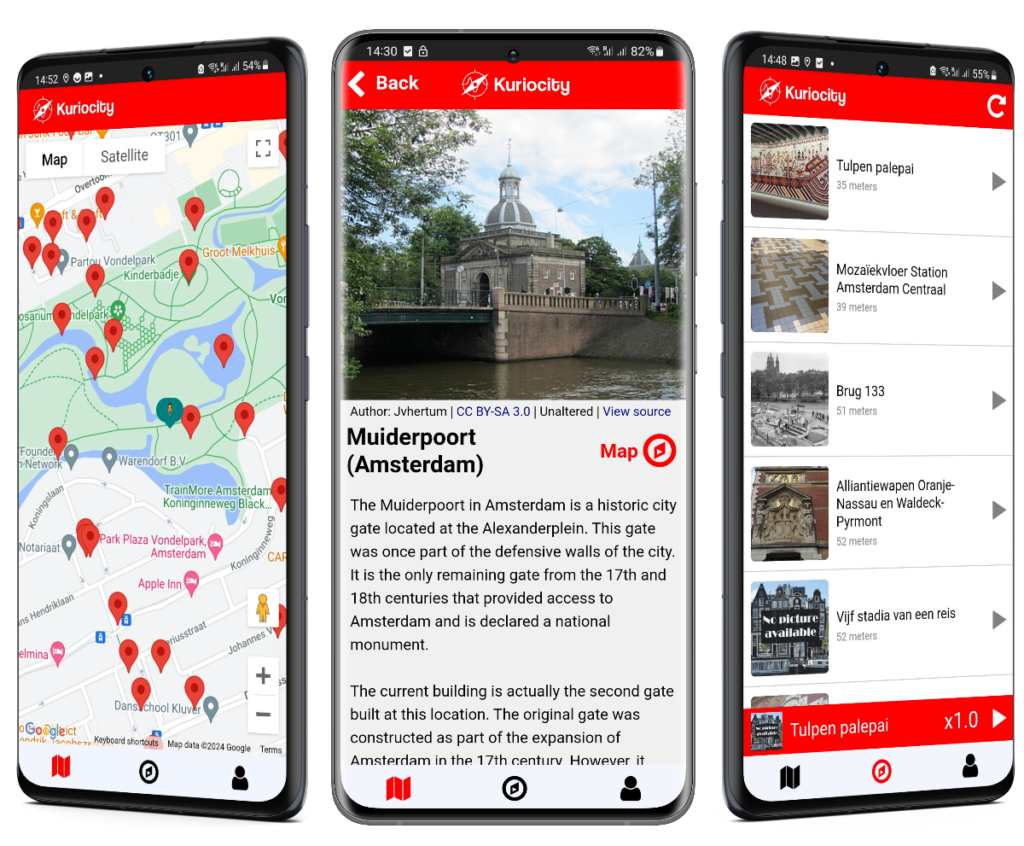
Area covered:
*Please note that the audio in this blog post is computer-generated, therefore it may mispronounce some words.
